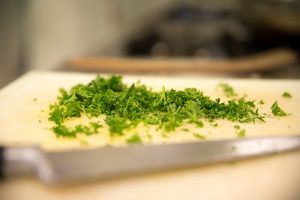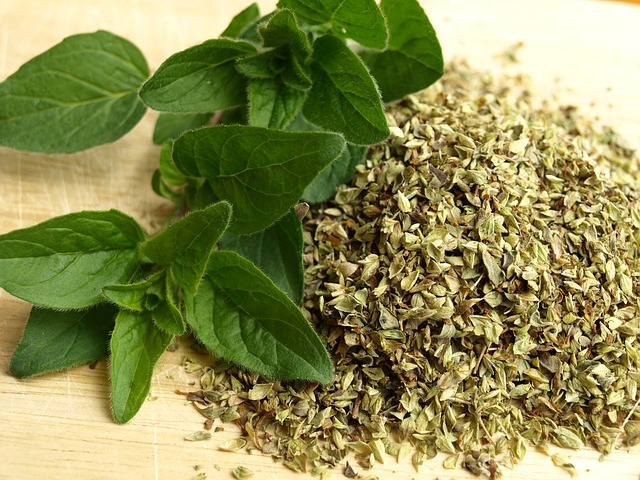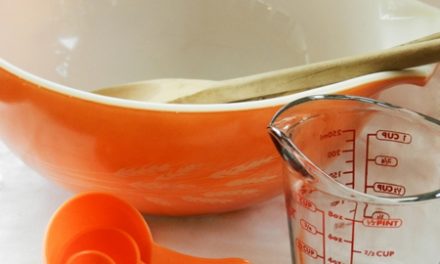Fresh herbs are readily available in most markets these days, and they are always nice to use. But they
can be expensive, and they have a short live span.
Moreover, you have to buy a good-size bunch when your recipe may call for just a few sprigs. So it is important to store fresh herbs carefully and use them up (they always add something special to eggs or a salad).
To clean, gently rinse the bunch of fresh herbs under cold water. Shake to get rid of excess water, or put into a salad spinner, if you have one, and spin dry.
To store, take a paper towel, dampen it lightly with cold water, and loosely wrap the herbs in the dampened towel, then put it into a plastic bag. Don’t squeeze all the air out, the herbs need to breath to stay fresh. Refrigerate.
Dried herbs often have a stronger flavor than fresh herbs, but not always. Dried herbs age in their jars and with time their flavor fades.
The best way to find out if a dried herb is still flavorful is to taste it. Hold a little of the herb on your tongue for a few seconds so the warm moisture of your mouth brings out the flavor, and if it seems like sawdust, throw it out.
Cilantro, also called Chinese parsley, is actually the leaves of the coriander plant. It is a favorite flavoring in many Mexican dishes. The taste of cilantro is very different from parsley, which it resembles, and sometimes it takes getting accustomed to before you appreciate it. It is sold in bunches that are usually larger than your needs, so store it as you would parsley and use it in guacamole or in a tortilla with sliced avocado, or sprinkle some over sliced tomatoes. It is also chopped the same way as parsley.
The most commonly used herb in European and American cooking, parsley comes in curly and flat leaf (or Italian) varieties. Parsley has a fresh, mild flavor, and can be used lavishly, added to sauces and stuffings, sprinkled over cooked vegetables and pasta, and included in salads. It is used almost like a vegetable in the Middle Eastern salad Tabbouleh. Parsley stalks make an excellent flavoring; tie them together and add to any soup or casserole.
Chopping Parsley: After rinsing and drying the parsley, remove the leaves and discard the stems. Then make a dense little pile of the leaves, holding them together with your fingers, and chop the parsley with a large, sharp knife. Continue to chop until the parsley is cut into tiny pieces.

Chopped Fresh Parsley
Marion Cunningham
Learning to Cook with Marion Cunningham







